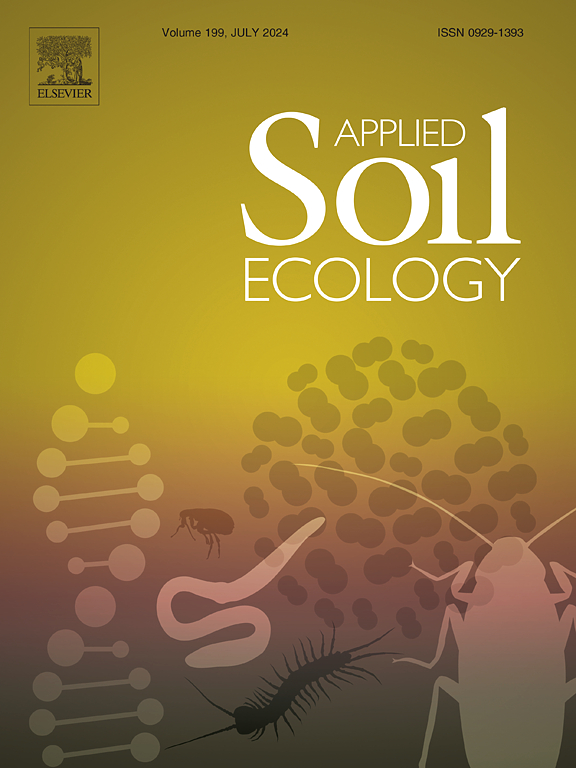Functional group of grassland plants affects their fungal symbionts more than long-term fertilisation in a field experiment
IF 4.8
2区 农林科学
Q1 SOIL SCIENCE
引用次数: 0
Abstract
Fertilisation of productive grasslands affects plant communities and the relationship between plants and fungal symbionts. We investigated the effects of manipulated nutrient availability, vegetation composition, and host identity on the communities of symbiotic fungi – arbuscular mycorrhizal fungi (Glomeromycotina, G-AMF) and fine root endophytes (Mucoromycotina, M-FRE). We collected individuals of 16 plant species from the plots of a long-term experiment in a semi-natural grassland with manipulated fertilisation (nitrogen and phosphorus added over 4 years) and vegetation composition (20 years of selective weeding of functional groups). Data from the roots of individual plants were complemented by sampling roots and rhizosphere soil in experimental plots to characterise the effects of fertilisation and plant community on G-AMF at the plant community level.
We found a strong effect of fertilisation on the composition of both fungal groups, but the differences among host species and particularly between their functional groups (forbs and C3 grasses) were much larger. Fertilisation reduced the abundance of both fungal groups in plant roots with a larger decline in G-AMF, and the α-diversity of G-AMF decreased substantially. Our results did not confirm difference of fertilisation effects on fungal symbionts between forb and grass species that was observed in earlier short-term pot experiment. Our results demonstrate the urgent need to perform studies examining the response of symbiotic fungal communities to experimental factors under field conditions, preferably by sampling roots of a wide range of individual plant species.
在田间试验中,草地植物功能群对其真菌共生体的影响大于长期施肥
高产草地的施肥影响植物群落以及植物与真菌共生体之间的关系。研究了养分有效性、植被组成和寄主身份对共生真菌丛枝菌根真菌(Glomeromycotina, G-AMF)和细根内生真菌(Mucoromycotina, M-FRE)群落的影响。研究人员在半自然草地上进行了长期实验,收集了16种植物的个体,并对其进行了施肥(4年氮磷添加)和植被组成(20年选择性除草)。通过对试验田的根和根际土壤取样来补充单株根系的数据,在植物群落水平上表征施肥和植物群落对G-AMF的影响。我们发现施肥对这两个真菌类群的组成都有很强的影响,但寄主物种之间,特别是它们的功能类群(forbs和C3禾本科)之间的差异要大得多。施肥降低了植物根系中两个真菌类群的丰度,G-AMF下降幅度较大,G-AMF α-多样性明显下降。我们的研究结果没有证实在早期的短期盆栽试验中观察到的牧草和牧草之间施肥对真菌共生体的影响差异。我们的研究结果表明,迫切需要进行研究,检查共生真菌群落对田间条件下实验因素的反应,最好是通过取样广泛的单个植物物种的根。
本文章由计算机程序翻译,如有差异,请以英文原文为准。
求助全文
约1分钟内获得全文
求助全文
来源期刊

Applied Soil Ecology
农林科学-土壤科学
CiteScore
9.70
自引率
4.20%
发文量
363
审稿时长
5.3 months
期刊介绍:
Applied Soil Ecology addresses the role of soil organisms and their interactions in relation to: sustainability and productivity, nutrient cycling and other soil processes, the maintenance of soil functions, the impact of human activities on soil ecosystems and bio(techno)logical control of soil-inhabiting pests, diseases and weeds.
 求助内容:
求助内容: 应助结果提醒方式:
应助结果提醒方式:


